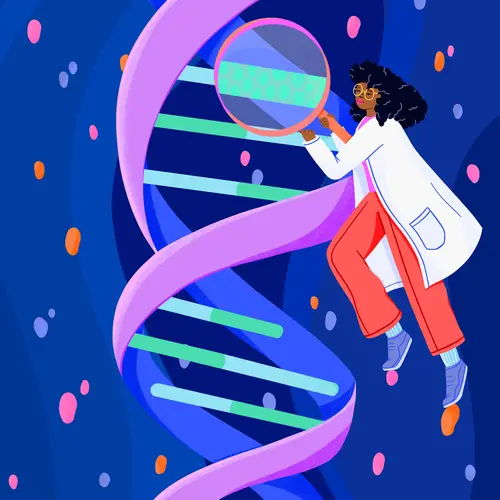What Is Methadone?
Methadone is part of a category of drugs called opioids. German doctors created it during World War II. When it came to the United States, doctors used it to treat people with extreme pain. Today, you might also get it as part of a treatment program for an addiction to heroin or narcotic painkillers.
Even though it’s safer than some other narcotics, your doctor should keep a close watch while you take methadone. Taking it can lead to addiction or abuse.
What Does Methadone Do?
Methadone changes the way your brain and nervous system respond to pain so that you feel relief. Its effects are slower than those of other strong painkillers like morphine. Your doctor may prescribe methadone if you’re in a lot of pain from an injury, surgery, or long-term illness.
It also blocks the high from drugs like codeine, heroin, hydrocodone, morphine, and oxycodone. It can give a similar feeling and keep you from having withdrawal symptoms and cravings. You may hear this called replacement therapy.
It’s usually just one part of your treatment plan. It isn’t a cure for addiction.
How Is Methadone Used?
If you need methadone for pain, your doctor will write a prescription for it. For an addiction, you’ll get it from a special treatment program. You can find programs through the Substance Abuse and Mental Health Services Association treatment locator (https://findtreatment.samhsa.gov/) or by calling 1-800-662-HELP (4357).
Methadone comes in tablet, powder, and liquid forms. You have to have a prescription to get it. Your providers will give you the dose that should work best for you. They also might change your dose during treatment. Tell your doctor how you feel when you use it. Don’t stop taking methadone without talking to them.
Follow the dosage instructions exactly. If your doctor prescribes tablets that are “dispersible,” dissolve all or part of the tablet in liquid (usually water or citrus-flavored drinks) and drink it all.
Experts say people who take methadone to treat an addiction should use it for at least a year while they work on recovery. When it’s time to stop, your doctor will help you do so slowly to prevent withdrawal.
Some people take methadone illegally, without a prescription. Most of them inject it, which can expose them to diseases like HIV and hepatitis C.
Methadone Side Effects
With short-term use, you may notice side effects like:
- Restlessness
- Upset stomach or vomiting
- Slow breathing
- Itchy skin
- Heavy sweating
- Constipation
- Sexual problems
- Weight gain
- Sleep changes
- Appetite changes
- Headache
- Stomach pain
- Dry mouth
- Flushing
- Mood changes
- Vision problems
Some side effects are more serious. Call the doctor if you have:
- Trouble breathing
- Fainting or lightheadedness
- Hives or a rash
- Swollen lips, tongue, throat, or face
- Chest pain or a rapid heartbeat
- Hallucinations or confusion
- Seizures
- A hoarse voice
- Trouble swallowing
- Severe drowsiness
- Unusual menstrual periods
Methadone Risks
Some people shouldn’t take methadone. Tell your doctor if you have:
- Heart disease
- A heart rhythm disorder
- An electrolyte imbalance
- Breathing problems or lung disease
- A history of head injury, brain tumor, or seizures
- Liver or kidney disease
- Problems urinating
- Gallbladder, pancreas, or thyroid problems
- A condition for which you take sedatives
Drugs than can affect methadone include:
- Other narcotics
- Drugs that make you sleepy or slow your breathing
- Drugs that change your serotonin levels
Make sure to let your providers know about any medications you’re taking.
You can become dependent on methadone. Your brain may begin to rely on the pain relief it brings.
Even though the effects of methadone are different from those of other opioids, your body can still get used to it. This means you might need to take more to feel the same effects. This is called tolerance, and it can happen with any opioid. Your body can also become dependent on methadone and other opioids. Your brain relies on the pain relief they bring, and you have withdrawal symptoms if you stop taking them suddenly.
People react to methadone in different ways. Changing your dosage on your own can lead to dangerous side effects or an overdose. Overdose symptoms include:
- Slow breathing
- Slow heart rate
- Severe drowsiness
- Weak muscles
- Cold, clammy skin
- Small pupils
- Fainting
Overdose can be fatal. It’s important to be honest with your doctor about your methadone use.
Methadone Storage and Disposal
Keep methadone:
- In its original container
- Tightly sealed
- Out of children’s reach
- At room temperature, away from heat and moisture
If your methadone is expired or if you don’t need to take it anymore, find a safe take-back program or flush it down the toilet. Talk to your pharmacist or treatment provider if you have questions.
Pregnant or Breastfeeding Women and Methadone
Women who are pregnant or breastfeeding may take methadone. It can cross your placenta or go into your breast milk. Your doctor will keep this in mind when deciding on a treatment plan.
If you’re pregnant and have a heroin or pain pill addiction, it’s especially important to get treatment to keep yourself and your baby safe. Babies born to women who take methadone might go into withdrawal. But most of them have fewer health problems than infants whose mothers used heroin or other opioids.
Call your doctor or go to the ER if a breastfeeding infant shows unusual sleepiness, weakness, or breathing problems. When you’re ready to wean your baby off breast milk, talk to your doctor about how to do it slowly and safely to avoid methadone withdrawal.
<!--td {border: 1px solid #ccc;}br {mso-data-placement:same-cell;}--> Get additional information on opioid addiction treatment options.

